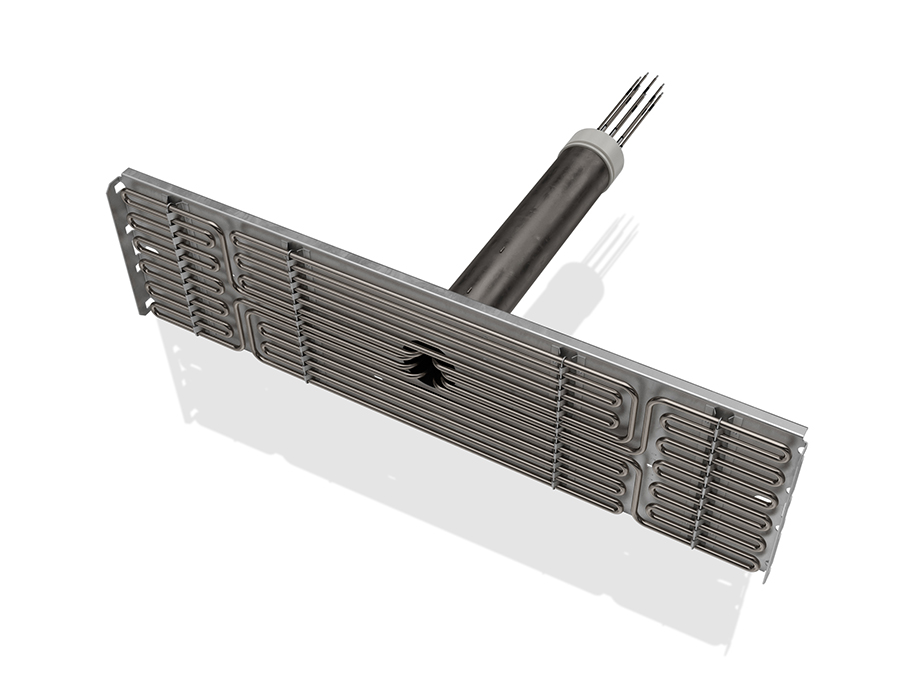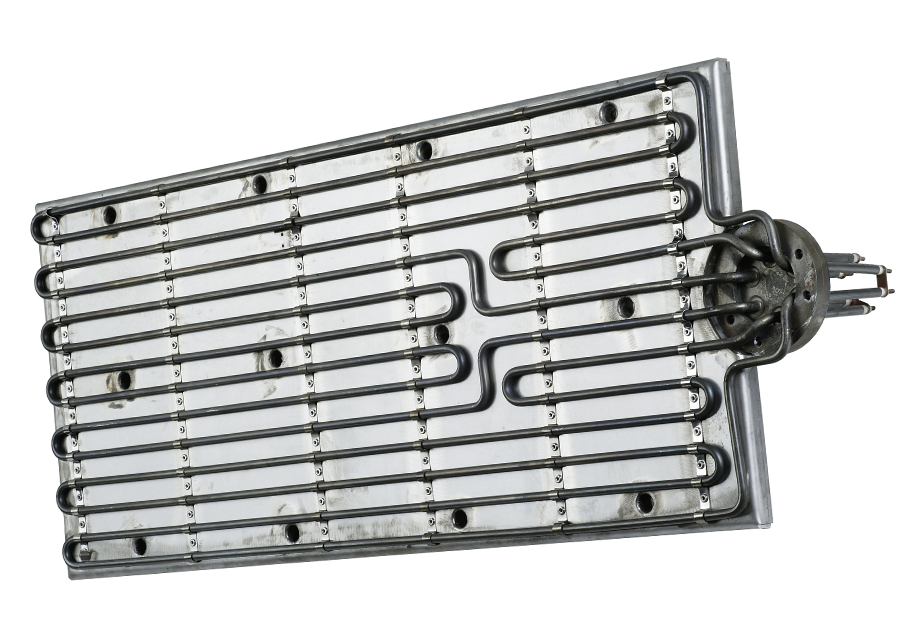Panel heaters are needed in all application scenarios in which heat needs to be uniformly generated on a substrate. Customers for these heating assemblies include primarily manufacturers of systems for coating tools or solar panels.
DEW heating element calculator
With the DEW heating element calculator you can comfortably calculate important values for the heating element you are looking for. Determine, for example, the power required to warm up a substance with a specific mass from temperature T1 to T2 in a certain time.
Select the value that you want to calculate, enter all values and click "Calculate":

Design
So that the panel heaters can evenly radiate heat on to the surface that is to be heated, tubular heaters are shaped and mounted on carrier plates. These act both as reflectors and as thermal insulation to the wall of the enclosure. This enables optimized heat radiation onto the substrates. The optimized shaping ensures that the maximum power is generated in a small surface area so that the maximum energy density can be delivered. For vacuum applications, the tubular heaters are brazed leak-tight in vacuum flanges. We used standard CF flanges or specially fabricated flanges for this. All assemblies are checked with our helium tester for 100% leak tightness.

Installation information / temperature control
Our panel heaters are generally not supplied with the temperature control technology. However, we make installation at the customer easier by welding sensor mounting brackets onto the tubular heaters or supplying special fastening elements.

